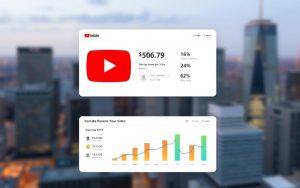Table of Contents
In the ever-evolving landscape of digital marketing, advertisers need a robust approach to maximize their ROI and achieve measurable results. A well-crafted performance marketing strategy can be a game-changer, enabling advertisers to target their audience with precision and optimize their campaigns based on real-time data. This article delves into the essential components of a performance marketing strategy, providing a comprehensive guide for advertisers looking to excel in the digital arena.
Understanding Performance Marketing
Performance marketing is a results-driven approach where advertisers pay only when specific actions are completed, such as clicks, conversions, or sales. This model emphasizes accountability and transparency, as every marketing dollar spent is directly linked to measurable outcomes.
Key Benefits of Performance Marketing
- Cost Efficiency: Advertisers only pay for completed actions, ensuring a higher return on investment (ROI).
- Measurable Results: Every campaign can be tracked and analyzed, allowing for continuous optimization.
- Targeted Reach: Advanced targeting options enable advertisers to reach their ideal audience with precision.
Building Blocks of a Performance Marketing Strategy
Creating an effective performance marketing strategy involves several critical steps, from setting clear goals to leveraging the right technologies. Here’s a detailed look at each component.
1. Setting Clear Objectives
Before diving into campaign execution, it’s essential to establish clear, measurable objectives. These goals will guide every aspect of your strategy and provide benchmarks for success.
- Define Your Goals: What do you want to achieve? Common objectives include increasing brand awareness, driving website traffic, generating leads, or boosting sales.
- Set Key Performance Indicators (KPIs): Determine the metrics that will measure the success of your goals, such as cost per acquisition (CPA), return on ad spend (ROAS), or click-through rate (CTR).
2. Identifying Your Target Audience
Understanding your audience is crucial for any marketing strategy. Detailed audience insights enable you to tailor your campaigns for maximum impact.
- Demographic Analysis: Identify the age, gender, location, and other demographic factors of your target audience.
- Behavioral Insights: Analyze the online behavior, interests, and purchasing patterns of your potential customers.
- Psychographic Profiling: Consider the values, attitudes, and lifestyle preferences that influence your audience’s decisions.
3. Choosing the Right Channels
Selecting the appropriate marketing channels is vital for reaching your audience effectively. Each channel has its strengths and should align with your overall strategy.
- Search Engine Marketing (SEM): Utilize paid search ads to capture high-intent traffic.
- Social Media Advertising: Engage with users on platforms like Facebook, Instagram, and LinkedIn.
- Connected TV Advertising: Reach a broader audience through connected TV and OTT advertising, leveraging the growing popularity of streaming services.
- Email Marketing: Nurture leads and retain customers with targeted email campaigns.
4. Crafting Compelling Ad Creatives
Your ad creatives play a significant role in capturing attention and driving action. Compelling visuals and persuasive copy can significantly enhance your campaign performance.
- Visual Appeal: Use high-quality images or videos that resonate with your audience.
- Clear Messaging: Ensure your ad copy is concise, compelling, and includes a strong call-to-action (CTA).
- A/B Testing: Continuously test different creatives to identify what works best.
5. Leveraging Advanced Technologies
Incorporating advanced technologies can enhance the efficiency and effectiveness of your performance marketing strategy.
- Programmatic Advertising: Automate the buying and placement of ads to reach the right audience at the right time.
- Data Analytics Tools: Use analytics platforms to monitor campaign performance and derive actionable insights.
- Customer Relationship Management (CRM) Systems: Manage and analyze customer interactions to improve targeting and personalization.
Optimizing Campaign Performance
Continuous optimization is key to maximizing the effectiveness of your performance marketing strategy. Regularly reviewing and adjusting your campaigns ensures sustained success.
1. Monitoring and Analyzing Data
Consistent monitoring allows you to track progress and identify areas for improvement.
- Real-Time Analytics: Use real-time data to make informed decisions and adjust your strategy on the fly.
- Performance Reports: Generate detailed reports to evaluate the success of your campaigns against your KPIs.
2. Conducting A/B Testing
A/B testing helps you determine the most effective elements of your campaigns.
- Test Variables: Experiment with different headlines, images, CTAs, and landing pages.
- Analyze Results: Compare the performance of different variations to identify what drives the best results.
3. Refining Targeting Strategies
Refine your targeting to ensure your ads reach the most relevant audience.
- Audience Segmentation: Segment your audience based on various criteria to deliver more personalized messages.
- Retargeting: Implement retargeting campaigns to re-engage users who have interacted with your brand but haven’t converted.
4. Budget Allocation
Efficient budget management is essential for maximizing ROI.
- Dynamic Budgeting: Adjust your budget allocation based on campaign performance and market conditions.
- Cost Management: Monitor and control your spending to avoid overshooting your budget.
Integrating Connected TV and OTT Advertising
As the media consumption landscape shifts, integrating connected TV (CTV) and over-the-top (OTT) advertising into your performance marketing strategy can provide significant advantages.
Benefits of Connected TV Advertising
- Wider Reach: CTV and OTT platforms offer access to a broad and engaged audience.
- Enhanced Targeting: Advanced targeting capabilities allow for more precise audience segmentation.
- Measurable Impact: Track viewer engagement and conversion metrics to gauge the effectiveness of your ads.
Best Practices for CTV and OTT Advertising
- Ad Placement: Strategically place ads during high-engagement times to maximize viewership.
- Engaging Content: Create high-quality, engaging ads that capture the audience’s attention.
- Cross-Channel Integration: Integrate CTV and OTT campaigns with your other digital marketing efforts for a cohesive strategy.
Conclusion
Crafting a comprehensive performance marketing strategy is essential for advertisers aiming to achieve measurable success in the digital marketing landscape. By setting clear objectives, understanding your audience, choosing the right channels, creating compelling ads, leveraging advanced technologies, and continuously optimizing your campaigns, you can drive significant results. Incorporating connected TV and OTT advertising into your strategy can further enhance your reach and impact. With a well-rounded approach, you can maximize your marketing efforts and achieve your business goals.









